Although ume(梅,Prunus mume) is often translated into English as plum, it is more closely related to the apricot. Plum(Prunus salicina) is referred to sumomo(酢桃 or 李) in Japan.
The Mito Ume Festival(水戸の梅まつり) is being held at Kairaku-en(偕楽園) and Kodo-kan(弘道館) in Mito, Ibaraki Prefecture from February 18th to March 31st.
 |
| Kairaku-en |
 |
| Kairaku-en photo by 日本列島お国自慢 |
The garden has 3,000 ume trees of 100 different kinds.
 |
| Kobuntei |
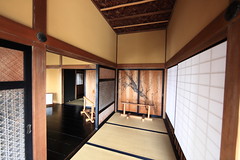 |
| Japanese traditional style house interior / 水戸(みと)・好文亭(こうぶんてい) / TANAKA Juuyoh (田中十洋) /flickr |
 |
| Japanese traditional style house / 水戸(みと)・好文亭(こうぶんてい) by TANAKA Juuyoh (田中十洋) /flickr |
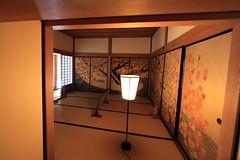 |
| Japanese traditional style house interior /水戸(みと)・好文亭(こうぶんてい) by TANAKA Juuyoh (田中十洋) /flickr |
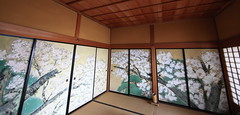 |
| Japanese traditional style house interior / 水戸(みと)・好文亭(こうぶんてい) by TANAKA Juuyoh (田中十洋) /flickr |
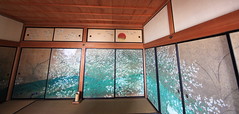 |
| Japanese traditional style house interior / 水戸(みと)・好文亭(こうぶんてい) by TANAKA Juuyoh (田中十洋) /flickr |
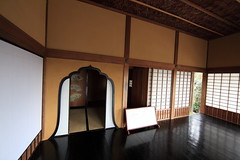 |
| Japanese traditional style house interior / 水戸(みと)・好文亭(こうぶんてい) by TANAKA Juuyoh (田中十洋) /flickr |
 |
| Kairaku-en on March 10, 2011 ume trees were almost in full bloom |
 |
| Kobuntei and Joban Line train |
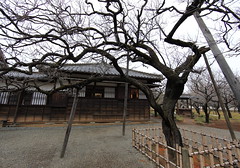 |
| Japanese traditional style house / 弘道館(こうどうかん) by TANAKA Juuyoh (田中十洋) /flickr |
Kodo-kan(弘道館) was built as a public school for the children of samurai families by Nariaki in the Edo Period. It was also damaged by the quake.
 |
| Japanese traditional style house / 弘道館(こうどうかん) by TANAKA Juuyoh (田中十洋) /flickr |
 |
| The garden illuminated the trees with lights on March 5 in 2011 |
As its name indicates the garden was open to the public six times a month, and admission to the garden is free now (entry into the Kobuntei costs 190 yen.)
 |
| fireworks on March 5 in 2011 |
 |
| on March 5 in 2011 |
Hello Ichinen, good morning (here the day is just started). Another great story I've read with interest! I love the way you talk about culturel events in Japan, it has a rich history and traditions! I like the photos of the Kobuntei building, because of the interior. As I told you I'm building a teahouse, so every photo of an Japanese house interior is very interesting for me. Thank you.
ReplyDeleteI read about the damage from the earthquake, it will take a lot of time to restore/rebuild the damaged houses gardens etc. But I hope the Japanese people do, because of the rich history of your country.
Again thanks a lot for your story, it's great you do that.
Kind regards, Ilona
Ilona, I hope these photos will help with your teahouse, although the photos of Kobuntei are a bit gorgeous for a Japanese teahouse.
DeleteWith traditional technique and good raw materials traditional wooden buildings can be rebuilt, but good raw materials such as woods are hard to come by now.
It took a long time to restore the Kobuntei because it was very difficult to get the same wall clay as the originals.
I do understand that it is not easy to beome the same materials as needed, Ichinen. By the way is that your name or bloggername? The teahouse I built is very simple and have a mizuyah(?) and one four-tatami-mat-room(?). I built it for a friend who likes (like me) everyting from the Japanese culture. It has to be a surpise, he read this blog too, so I can not tell everything about it ;)
ReplyDeleteHave a nice weekend, Ilona
Ichinen is my bloggername. It means one year. A teahouse with mizuya looks like the real thing!
Delete